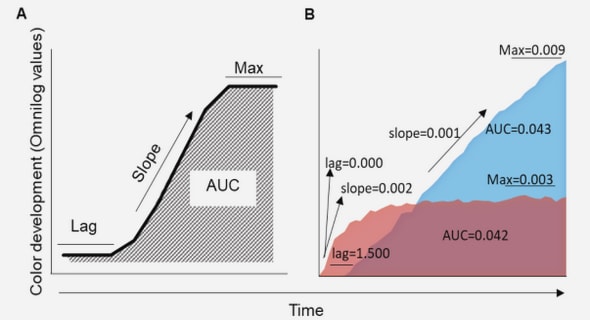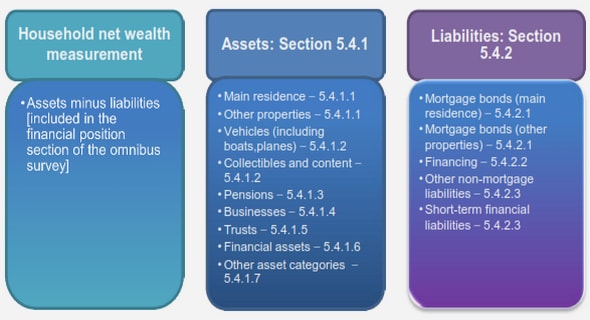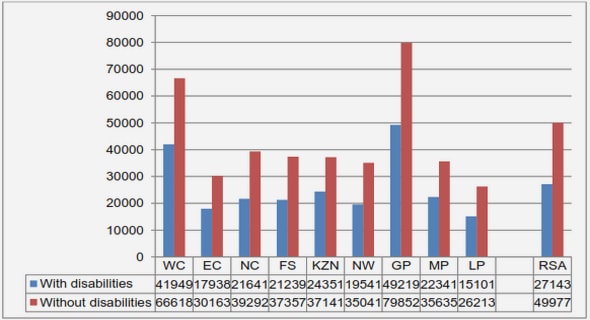Get Complete Project Material File(s) Now! »
CHAPTER! THE IDEOLOGY OF LIBERAL HUMANISM IN PETER ABRAHAMS’S TELL FREEDOM.
Peter Abrahams’s writing has received a fair amount of critical attention in the form of essays, theses, chapters in books and book-length studies 1• Most of these studies, chiefly undertaken by non-South African critics, focus on Abrahams’s novels and usually ignore or merely use as points of reference his poetry, short stories and autobiographical writing. This critical neglect may be attributed to, among other factors, the commonly-held view that autobiography is not ‘genuine’ literature, and that it is therefore ‘a close cousin to history’ (Butler, 1977:xiv). As indicated in the introduction to this study, autobiography has only recently acquired the status of a mode of writing which critics consider to be worthy of literary-theoretical scrutiny2 • Yet, as shown in the paucity of critical work on Abrahams’s Tell Freedom and his autobiographical short stories collected in Dark Testament, this new interest in autobiography has had no immediate significant impact on the South African literary scene. Stephen Gray, an influential critic of Southern African literature, accounts for the relative lack of interest in autobiographical writing (mainly by black writers) as follows:
Autobiographical works about the rise and entrenchment of apartheid in South Africa are notoriously unread in general, because autobiography itself as a literary category remains highly problematic; for our current tastes it is the form of sell-out bourgeois individualism. (1990:101) 3
As Gray himself has shown in the above essay on Abrahams’s autobiographical writings, it is not entirely accurate to describe the autobiographies written by black authors in the 1950s as a celebration of bourgeois individualism. Almost all these autobiographies were creative responses to socio-political conditions and were therefore more concerned with social analysis and documentation than with the celebration of individual accomplishments. In the life-stories of the black autobiographers of the 1950s and 1960s the writers’ achievements were always seen against the background of political realities.
Tell Freedom is generally regarded as a path-breaking work in the history of South African autobiographical writing by blacks. Published in 1954, Abrahams’s book was soon followed by Es’kia Mphahlele’s Down Second Avenue (1959), an autobiography which has earned itself the status of a classic in South African literature. Alfred Hutchison’s Road to Ghana (1960), Todd Matshikiza’s Chocolates for My Wife (1961) and Bloke Modisane’s Blame Me on History, (1963) which appeared after Mphahlele’s classic, all explore, from different perspectives, the dilemmas and tensions of living in a racially segregated society.
Nick Visser has described the status of Tell Freedom as a forerunner in Sout African black autobiography as follows:
Tell Freedom has a number of characteristics that recur in later autobiographies. Naturally, given the rigidity of South African society and of the position of blacks within it, some similarities of subject matter are bound to arise … the works often seem to be motivated by the same impulse and to presuppose a particular relation to their audience. The impulse is stated succinctly in Abraham’s [sic] title – to tell freedom, which means in tum to tell of the lack of freedom and what it does to one. (1976:51) As implied in Visser’s comments above, the similarity of themes, notably the theme of exile in these autobiographies, has given rise to the perception among some critics that these works, taken as a whole, have no thematic diversity 4• James Olney’s comment quoted below is typical of the critical tendency to stress thematic affinities and ignore individual differences in these autobiographies:
Almost as if they were following a single blueprint for writing autobiography, these men all describe variations on a single plan; no doubt this is so because something very like a blueprint was imposed on their lives in South Africa. Moreover, the autobiographical writings of Lewis Nkosi, Dugmore Boetie, Gerard Sekoto, Noni Jabavu, Chief Albert Luthuli, Clements Kadalie, and « Dora Thizwilondi Magidi »- all of them in other ways quite unlike the mono-patterned autobiographies ofMphahlele et al.-serve to confirm and reinforce the notion that the repeated pattern in South African autobiography is the result of an omnipresent pattern in South African life. (1973:249) Olney goes on to describe what he considers to be the peculiarities of South African autobiography as distinct from African autobiography in general:
… the pattern of South African autobiography is not determined by any internal social cohesion or social logic, not by what I have called social synecdoche, nor by a cultural heritage that extends from the present individual back through legendary ancestors to a divine source. Rather the pattern is determined by precisely the opposite – by a social disunion, by a cultural and political dichotomy. The classic pattern of South African autobiography describes a progressive alienation that, forced to the extreme, becomes spiritual and physical exile. (1973:250) Besides examining the implications of the process of ‘progressive alienation’ identified by Olney in his book, this chapter will focus on Abrahams’s representation of himself as a literary artist in Tell Freedom. I intend to demonstrate ways in which Abrahams’s understanding of ‘literature’ and of his own role as a writer is embedded in the liberal humanist ideology which privileges individual freedom over collective interests and seeks a transcendental role for the writer who is often regarded as a gifted creator of literary artifacts. Moreover, as I shall argue, liberal values and the artistic sensibility provide what Karl Weintraub (1975) has described as the ‘standpoint’ from which Abrahams chose to view and review his life in South Africa and to transform it into a relatively coherent. and meaningful narrative. Like all autobiographies, Tell Freedom presents a particular deliberately chosen version of the writer’s identity (what Janet V Gunn refers to as the displayed self). Therefore the reader must be wary of presuming a neat line of correlation between the values and interests of the ’empirical self and those of the ‘displayed self. Because of its author’s preoccupation with validating and celebrating his creative talent, Tell Freedom may be said to exhibit the features of a typical literary autobiography. Literary autobiography may be distinguished from other modes of autobiography by its focus on the career of the writer who normally has an established reputation. The story of the author’s past is supposed to answer the question which is always uppermost in the minds of curious readers: how did this person become a writer? As a mode of self-analysis literary autobiography goes back to Wordsworth’s verse autobiography The Prelude, described by him as ‘a poem on my poetical education’5• There are numerous examples of autobiographies by established writers who, like Abrahams, attempt to account for the provenance and development of their literary talents in their life-stories. Perhaps the most outstanding example of this mode of autobiographical writing is Jean Paul Sartre’s The Words. Interviewed in 1957, the year in which he wrote his autobiography, Sartre commented as follows on his motives for writing his life-story I am a writer: the first thing I must try to explain is why I write. I could have chosen another job: I could have been a painter or a businessman. Why did I in fact prefer that activity to all others?6
Essentially, Tell Freedom is the story of Abrahams’s attainment of artistic consciousness and his subsequent development as a writer. Consequently, the narrator-protagonist consistently foregrounds those experiences and events which contributed in various ways to the shaping of his creative talent. These include his frequent visits to the Bantu Men’s Social Centre and the Christian-liberal education he received at Anglican mission schools namely, Grace Dieu and St Peters. The presentation of events in the book follows a developmental or cumulative pattern charting the gradual change in the consciousness of the young Abrahams as he physically and symbolically moved away from the slum of Vrededorp to centres of education which would equip him with the necessary skills, attitudes, and philosophies to pursue a successful writing career.
The Abrahams of Tell Freedom differs in significant ways from some of his contemporaries and literary heirs, most of whom felt the need to subordinate their art (including their autobiographies) to political causes. Black South African autobiographers such as Mokgatle, Hutchison, and, to lesser extent, Mphahlele combine the roles of political activists and literary artists 7 • In opposition to this conception of the role of the artist as political activist, Abrahams sees creative writing as the only viable career for the talented individual and tends to be sceptical of rigid political allegiances. He seeks a relatively isolated ‘space’ for the creative artist; a space which allows the writer to transcend the limiting and perhaps limited terrain of political contestation and conflict involving class and racial groupings. He chooses the level of transcendent creativity so that he can understand more fully what he has described as ‘the business of living’. As he strikingly puts it in his autobiographical book Return to Goli:
My business as a writer was with people, with human thoughts, conflicts, longings and strivings, not with causes. Painfully, I was slowly groping to a view of life that transcended my own personal problems as a member of one oppressed group of humanity. I felt that if I could see the whole scheme of things with the long eye of history I might be able to fit the problems of my own group into the general human scheme and, in doing so, become a writer. ( 1953: 17)
TITLE
DECLARATION
DEDICATION
ACKNOWLEDGEMENT
SUMMARY
INTRODUCTION
CHAPTER! The Ideology of Liberal Humanism in Peter Abahams’s Tell Freedom
CHAPTER2 Modisane’s Blame Me On History: In Search of Purpose and Fulfillment
CHAPTER3 Conformity and Rebellion in Naboth Mokgatle’s The Autobiography of an Unknown South African
CHAPTER 4 The Liberal-Christian Vision in Alan Paton’s Autobiographies
CHAPTER5 Sindiwe Magana : Autobiography as Counter-hegemonic Discourse
CONCLUSION
APPENDIX
BIBLIOGRAPHY
GET THE COMPLETE PROJECT
IDEOLOGY AND FORM IN SOUTH AFRICAN AUTOBIOGRAPHICAL WRITING: A STUDY OF THE AUTOBIOGRAPHIES OF FIVE SOUTH AFRICAN AUTHORS


